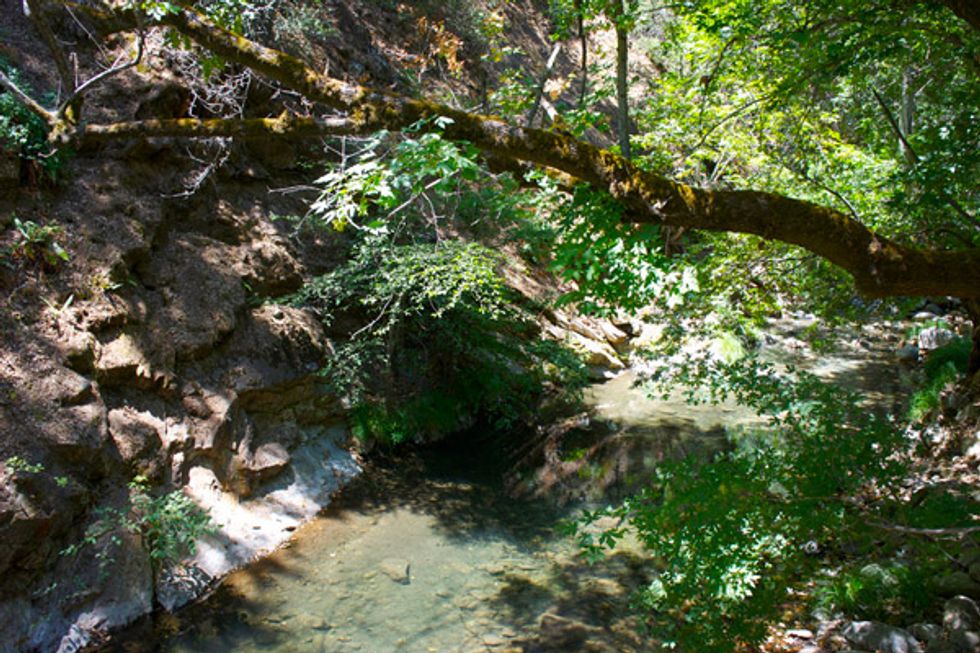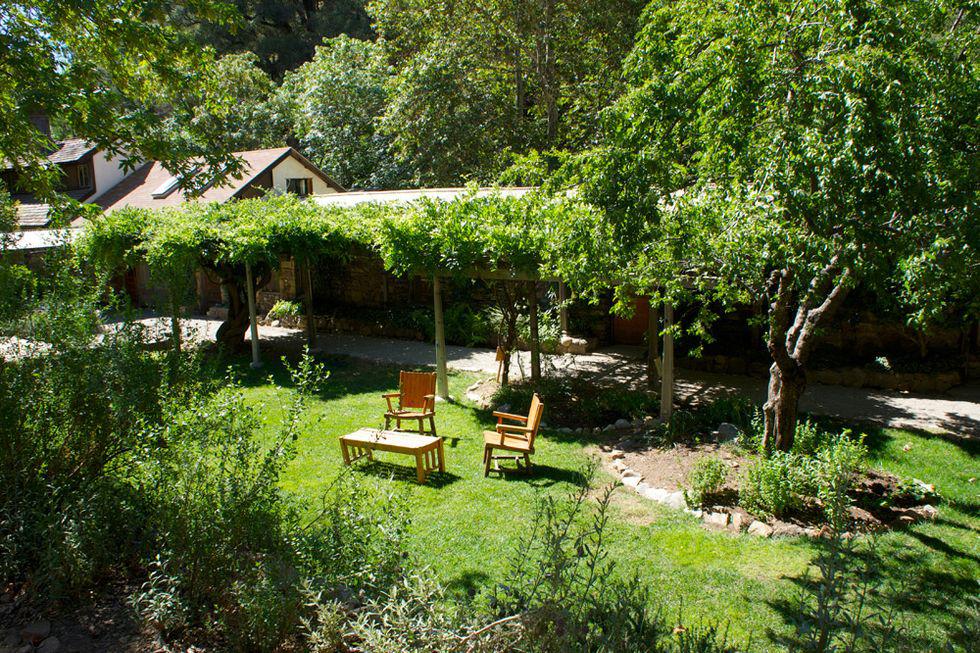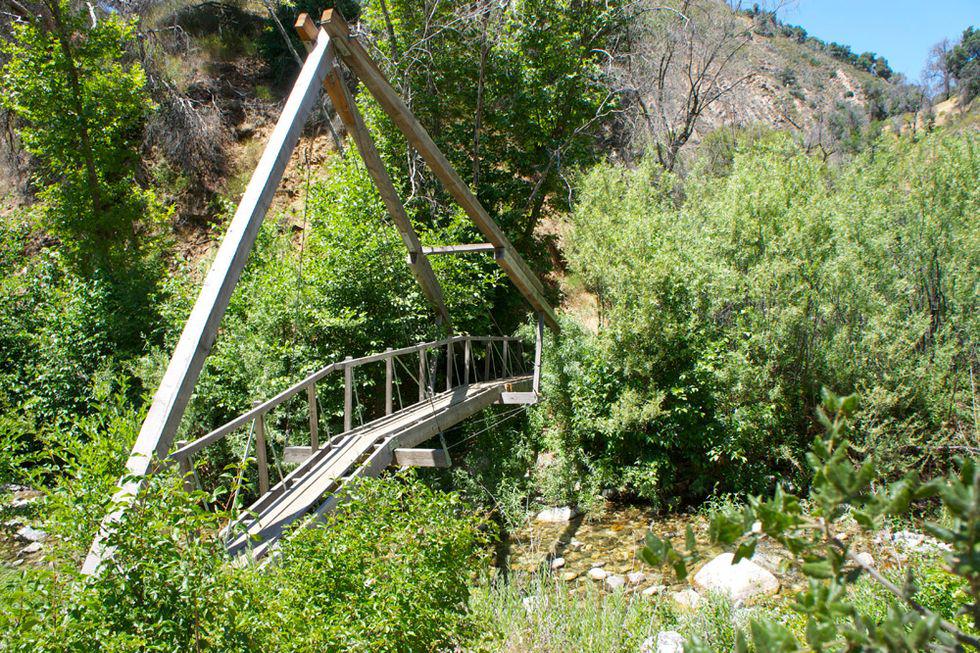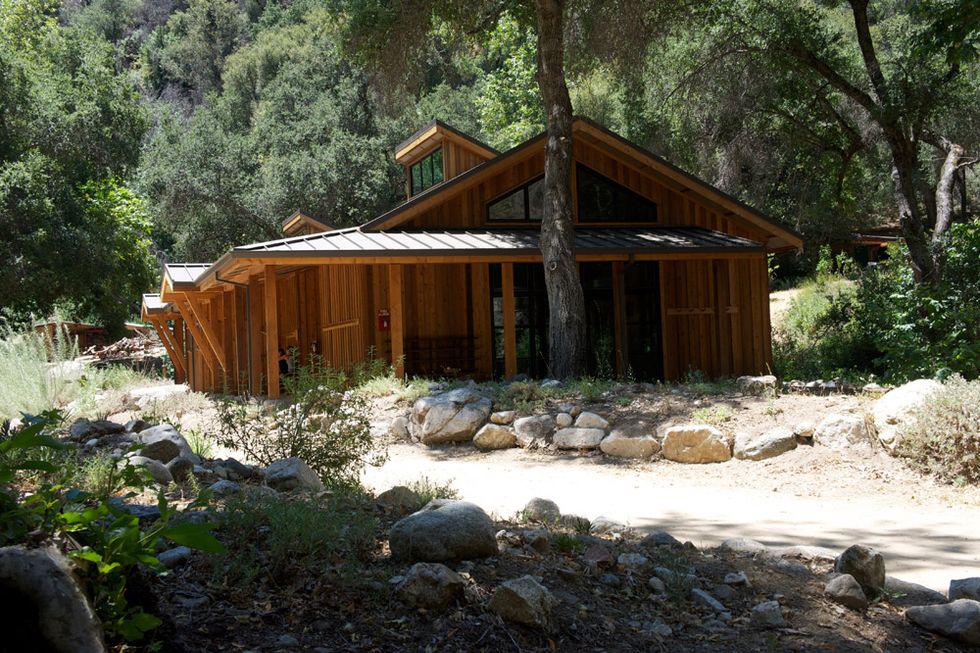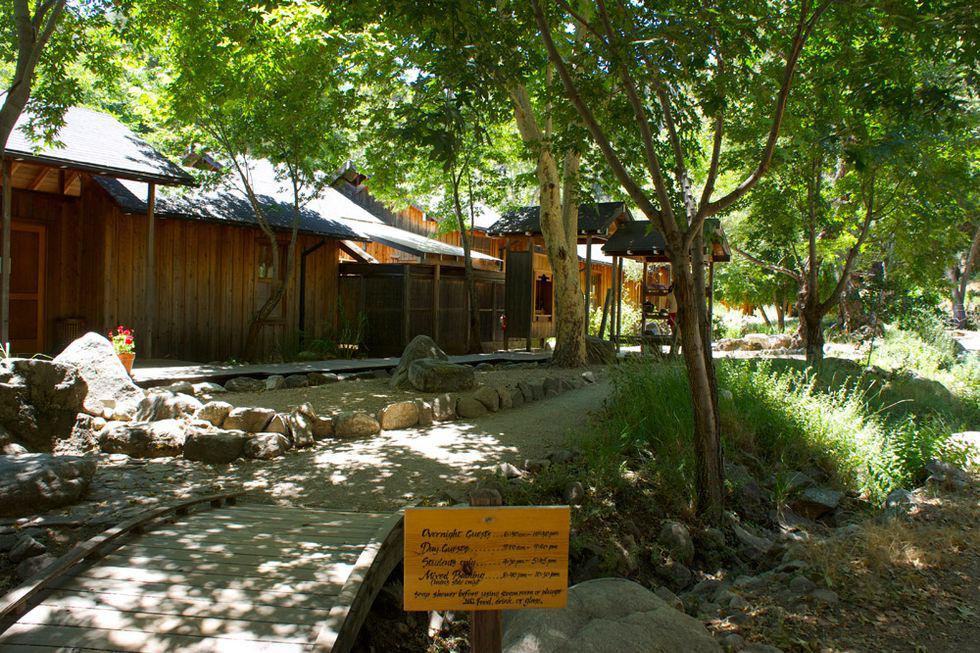Every story about a visit to Tassajara has to begin with the story of getting to Tassajara. It is no simple journey. Tucked in the heart of hilly, scrub-brushy Monterey County, about ten miles inland from Big Sur, it's a place that feels more removed from the modern world with each of the last fourteen miles of rugged dirt road it takes to get there — a road, mind you, that's been just as rugged and treacherous since it was first built in the 1870s to take summer travelers from Carmel and Salinas to Tassajara Hot Springs.
The small Tassajara Valley has been a hidden escape for all of these 140 years, but for the last 45 the resort grounds have been owned by the San Francisco Zen Center, serving as a guest resort in the spring and summer months, and as a place of quiet Zen practice for some 60 student residents over the late fall and winter. Getting there means driving into the Carmel Valley and to a small dot on the map called Jamesburg, where you can pick up a "stage" (these days a Chevy Suburban) that regularly ferries passengers up that last 45-minute stretch of steep road, which is recommended only for trucks and SUVs. And once you get there, having traversed up to an elevation of 5,000 feet above sea level and back down to Tassajara Creek at around 1,500 feet, it's impossible not to feel like you've journeyed off the grid, and that you've entered a space very march apart from the hurried, perpetually busy and connected one you just left behind.
Tassajara does not advertise, however the S.F. Zen Center relies on the guest season to help support the Center's operations. Throughout the summer they offer various themed retreats, all rooted in Zen practice, focused on yoga, creativity, food, and expression. Guests can also go simply for a weekend to enjoy the creek, the pool, the bathhouse, the beautiful breads and thoughtfully prepared vegetarian food at meal times, and the quietude of the place, with the option of participating in group meditation in the morning or early evening.
Whether visiting for the purpose of learning more about Zen, or just coming as a casual tourist, you get a taste of the structured life enjoyed by the students who stay here to meditate daily for months at a time, free of charge. As Program Director David Zimmerman puts it, "It's a place for people to find that there are other ways of being in the world. Alternatives to the career-focused life that most of us are taught to have."
One also gets a sense of the early commitment to the place made by the founders of the Zen Center, a commitment that was proven and renewed when five monks (including Zimmerman) saved the complex from the massive 2008 wildfire that swept through the county, and could easily have destroyed the place. Though everyone had been told to evacuate, these five stayed behind as the fire descended the cliffs on all sides, in order to keep a makeshift sprinkler system running over the buildings roofs. They saved all but a couple of out-buildings, and to this day one can still see the effects of the blaze in the valley, and in the dead trees that remain in spots too inaccessible to clean up. (The lush valley right around the creek and the resort, however, is as green as ever.)
Guest accomodations ($100 to $407 per night, depending on retreat status or shared/non-shared rooms) range from shared dormitories to modestly appointed historic cabins along on the creek, none of which have electricity and all of which are lit with kerosene lanterns. The only electricity, from a solar array on the cliffs above, runs to the administrative office and to the kitchen, where a group of students shares cooking duty through the guest season and continues Tassajara's long tradition of good food.
The day's meals — from their famous bread (see the well regarded Tassajara Bread Book if you aren't familiar, penned by former Tassajara cook and Zen monk Ed Brown) to lavish lunch spreads to pizza dinners — are an integral part of the experience, with the breakfast, lunch, and dinner bells part of the audio clock of each day. A schoolbell rung by a student near dawn, at 5:20 am, signals the community to rise (if they wish) for morning zazen (seated meditation). Wooden blocks at the complex's zendo and other locations create another set of signals for students, and bells at the dining hall give alerts at mealtimes at 9 am, 1 pm, and 7 pm. These sounds, like those one might year at a Zen monastery centuries ago, create the rhythm for each day without watches or cell phones. And though no alcohol or meat is served, guests are welcome to bring their own wine and snacks, which can be stored in a single guest refrigerator next to the dining hall. We also highly recommend the bag lunch option, offered every morning for those who might not want to make it back in time for seated lunch, with its generous array of cheeses, homemade spreads, vegetables, pickles, bread, and cookies to take away and eat when you wish.
Between retreat sessions, naps, or quiet moments reading, there is plenty of time for hikes, soaks in the sulphurous bathhouse or in the shallow creek, or for a trip down the creek to a clothing-optional swimming hole called The Narrows. It's a beautiful spot with a natural rock water slide, framed by white granite cliffs on two sides and punctuated by twittering birds and the occasional fish. And it's also a welcome oasis on hot afternoons in the valley, especially when only one building in the complex is air conditioned: the newly built yoga and retreat center.
Overall, it's impossible not to absorb a new level of calm while there. Leaving behind cell signal and internet feels cleansing on its own, but there is more to the Tassajara experience that is difficult to describe. It's a place that feels not just ancient, and secluded, but also uniquely blessed. One senses the gentleness and idealism of its original hippie inhabitants pervading every corner, but it's also been polished up and organized for a contemporary audience of travelers, albeit ones who embrace the trappings and strict schedule of Zen Buddhism. Driving away, back up that rocky, winding road to the sun-baked mountains above, feels like leaving behind a place so remote and secret that you may never find it again. Thankfully it exists on maps, and they will gladly have you back next year.
Tassajara Hot Springs accessible from Jamesburg, CA, outside of Carmel Valley Village. Reservations are required via this website.



